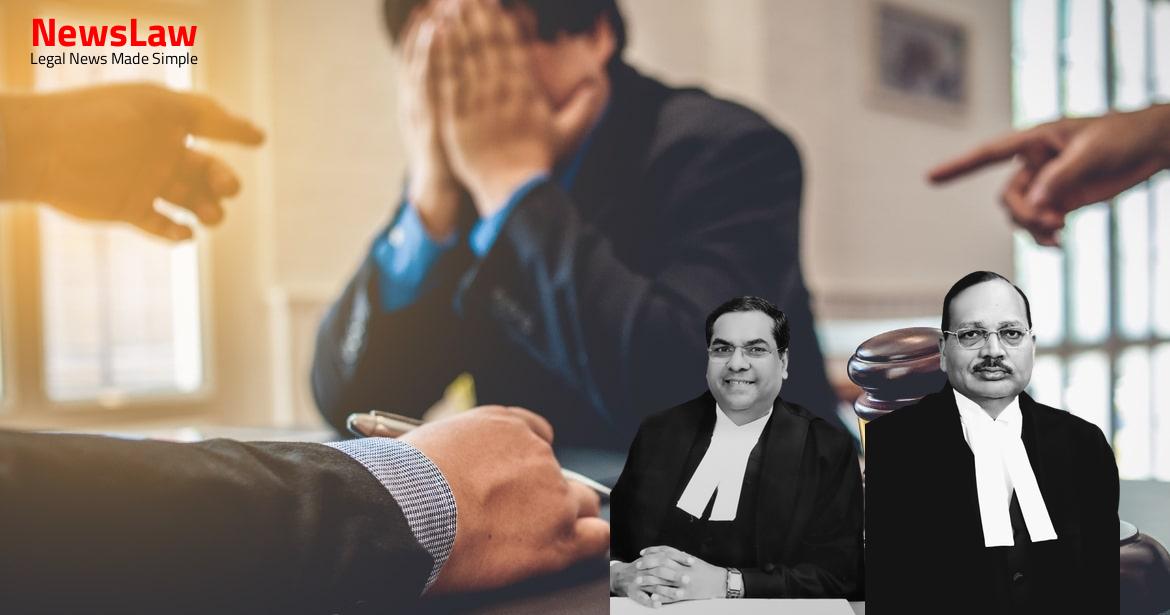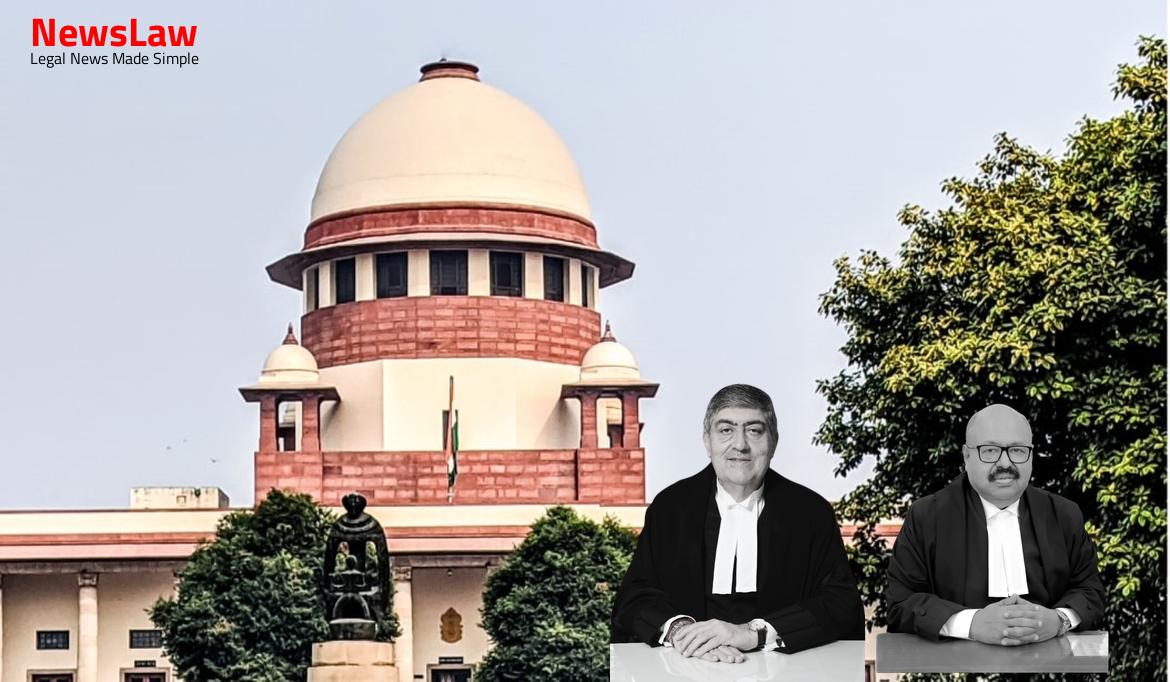In a landmark judgement by the Supreme Court of India, a significant decision was rendered in a criminal case related to the tragic rape and murder of minors. The case involved intense legal scrutiny and evaluation of the evidence presented by the prosecution against the accused. The judgement not only reflects the pursuit of justice but also sets a crucial legal precedent in cases of such grave nature.
Facts
- The Petitioner was awarded life sentence under Section 376 and death sentence under Section 302 IPC.
- The Madras High Court set aside the conviction under Section 120-B and 364A IPC but confirmed the sentences under Section 376, 302 r/w 34 and 201 IPC.
- After considering aggravating and mitigating circumstances, the High Court confirmed the death sentence awarded by the Trial Court.
- The Special Leave Petition filed by the Petitioner under Article 136 was dismissed by the Supreme Court, which confirmed the death sentence as a ‘rarest of rare’ case.
- The majority opinion of the Supreme Court emphasized on the cold-blooded nature of the crime involving rape and murder of minors, leading to the confirmation of the death sentence.
- The review petitions challenge the judgment affirming the conviction of the accused Manoharan under various sections of the IPC.
- The review petition was heard with oral arguments on the question of the sentence following the guidelines from a previous Constitutional Bench decision.
- The Petitioner retracted parts of his confessional statement but did not show remorse for the heinous crimes committed.
- While upholding the conviction, Justice Khanna dissented on the quantum of the sentence, but the death sentence was ultimately confirmed by the Supreme Court.
- On 29.10.2010, two children, X and Y, were abducted on their way to school in a borrowed school van.
- The children were believed to have been drowned in a nearby canal after failed attempts to poison them.
- Mohanakrishnan, the primary suspect, confessed to the crime before being shot dead by the police.
- The prosecution built a case using a ‘last seen theory’ and a confessional statement from the petitioner.
- Various forensic evidence including DNA analysis, betel nut saliva stains, and yellow-colored stains were presented.
- The girl’s body was found in a canal the next morning, followed by the recovery of the boy’s body 12 kms away.
- The petitioner was arrested and charged with abduction, rape, and murder of the children.
- Medical examinations of both accused revealed injuries and signs of foul play.
- The trial proceeded against the petitioner alone, as Mohanakrishnan’s involvement ended with his death.
- The petitioner’s potency test showed signs of injury around his private parts.
- An identification parade was conducted, and witnesses identified Mohanakrishnan as the van driver during the abduction.
- The investigation revealed the sequence of events leading to the tragic fate of the two children.
- The petitioner, arrested on 31.10.2010, faced charges upgraded to include murder and destruction of evidence.
- Forensic analysis of the seized van and other evidence corroborated the prosecution’s case against the petitioner.
- The case involved multiple witnesses, medical examinations, and forensic findings to establish the guilt of the accused.
Also Read: Supreme Court Judgement: Determination of ‘Seat’ of Arbitration Proceedings
Issue
- The present case does not qualify as the ‘rarest of the rare’ requiring a death sentence.
- The case falls under a special category where the appellant should be sentenced to life imprisonment without the possibility of remission or commutation.
- The appeal is allowed to the extent that the appellant will serve life imprisonment till natural death under Sections 432 and 433 of the CrPC.
Also Read: Union of India v. Arbitral Award: Limitation and Condonaion of Delay
Arguments
- The Petitioner challenges the reliance on the confessional statement of the accused, citing the fundamental right to effective legal assistance.
- The reliance on a proposition in a minority opinion is deemed erroneous as it was unsupported by the court’s order and disagreed with by Quadri J.
- The interference in the earlier judgment can only be permissible on the basis of an error apparent on the face of the record or the discovery of important new evidence.
- The Petitioner’s counsel challenges the judgment on both procedural and merit grounds, advocating for setting aside the conviction or alternatively commuting the death sentence.
- The Petitioner failed to demonstrate deficient legal representation or its impact on the case’s outcome as required by legal standards.
- Article 21 of the Indian Constitution is invoked mandating adequate legal assistance to avoid condemning the accused unheard.
- Arguments are made for not awarding the death penalty, emphasizing the split decision confirming it.
- Mitigating circumstances like lack of opportunity to present evidence, young age, and no criminal record are highlighted, questioning the weightage given by the High Court and this Court.
- Debates on the voluntariness of confession and the effect of retraction are presented, with reference to legal precedents.
- The admissibility of the confession is disputed on grounds of coercion and violation of procedural safeguards.
- The cornerstone of a valid confession in India is discussed, emphasizing compliance with statutory provisions for voluntariness and lack of police coercion.
- Allegations are raised that the appeal was decided without an independent re-appreciation of all material on record.
- Seven counsels refused to defend the Petitioner.
- Resolution by the bar to not take up Petitioner’s brief.
- Trial Court ensured the services of a legal aid counsel for Petitioner’s defence.
- The legal aid counsel ably conducted the petitioner’s defence during the trial.
Also Read: Jurisdictional Dispute Resolved: Supreme Court Ruling in the ONGC vs. Vendor Code Case
Analysis
- The prosecution has established a strong case against the Petitioner through various evidences and a clear confession which proves his guilt beyond any doubt.
- Conflicting versions have been presented by the Petitioner and defense witnesses with no explanation to discharge the onus under Section 106.
- The accused’s retraction is seen as an afterthought and does not hold weight against the confession and corroborating evidence.
- The confession has been corroborated by substantial evidence, leading to a firm conclusion of guilt against the Petitioner.
- A retracted confession requires assurance that the retraction was not an afterthought and that the original statement was true, demonstrating the voluntary nature of the confession is scrutinized.
- The Petitioner’s attempt to prevent the co-accused from raping the girl is deemed a belated lie and not supported by medical evidence.
- The Magistrate ensured all procedural requirements were met during the recording of the confessional statement and verified the voluntariness of the confession.
- The confession, though retracted later, remains admissible as it fits with the proven facts of the case and does not run counter to the evidence.
- The court critically analyzed all material witnesses and documents exhibited during the trial, indicating a thorough review of the case.
- The Petitioner’s plea of not committing peno-vaginal penetration is contradicted by medical evidence and DNA test results linking him to the crime.
- Review is not maintainable unless the material error manifest on the face of the order undermines its soundness or results in a miscarriage of justice.
- Death penalty should not be awarded based on circumstantial evidence.
- Courts should refrain from re-appreciating the entirety of evidence just to reach a different possible conclusion.
- A retracted confession may be the basis of conviction if the court is convinced it was true and voluntarily made, but a conviction should not solely rely on a retracted confession without corroboration.
- It is generally unsafe to rely on a confession, especially a retracted one, without corroboration.
- A confession can be relied upon if the court is satisfied that it is true and voluntary, but generally, it is not advised to convict based only on a confession without corroboration.
- The court found no grounds to review the judgment upholding conviction and death penalty.
- The possibility of recidivism was heightened due to the retraction of an earlier confession.
- The accused misused societal trust to hold captive innocent school-going children, leading to a brutal rape, sodomy, poisoning, and drowning.
- The crime was meticulously planned and executed, with multiple opportunities to cease and desist.
- The gravity of the offense shocked the conscience of the court and society, qualifying as ‘rarest of the rare.’
Case Title: MANOHARAN Vs. STATE BY INSPECTOR OF POLICE, VARIETY HALL POLICE STATION, COIMBATORE
Case Number: R.P.(Crl.) No.-000446-000447 / 2019



